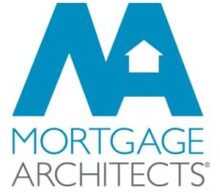Buying a decent-sized property in Canada’s most expensive housing markets can be tough, even for the affluent. Home prices in Toronto and Vancouver have been heading upward with no end in sight. Although the Bank of Canada lowering the overnight lending rate last month helped lower mortgage rates, you may still have a tough time qualifying for a mortgage on your dream home.
Housing affordability is of big concern, especially in red-hot real estate markets like Toronto and Vancouver where bidding wars are the norm. To address the lack of affordable housing, the Canada Mortgage and Housing Corporation (CMHC) has relaxed the rules surrounding the inclusion of rental suite income when qualifying for a mortgage.
With the sky-high home prices, it can be tough enough to qualify for a decent-sized home. Many homebuyers settle for a condo instead of a house because they simply cannot afford the latter. Effective September 28, 2015, the CMHC has upped the amount of rental suite income that can be used when qualifying for a mortgage. Under the new rules, you’ll be able to use 100% of gross rental suite income when buying a 2-unit owner-occupied home. Before then, you could only use 50% of gross rental suite income.
Before lenders will let you include the rental income, the secondary unit must be considered a legal suite. What is considered legal? That’s the million dollar question. Does it need to be fire retrofitted and registered with the city? These are important questions that need to be answered. If the suite isn’t considered legal, most lenders won’t let you include the rental income. One thing we know for certain is the suite must be self-contained with its own separate entrance.
If you’d like to include rental income, there must be two years of rental income history in the suite. If there’s more than a two year history, the maximum you can include is a two-year rent average. If the unit has sat vacant or it’s a new unit, you can obtain a market rent appraisal to obtain the estimated rental income.
The Debt Service Ratios
When applying for a mortgage pre-approval, lenders use two debt service ratios to determine your maximum purchase price: the Gross Debt Service Ratio (GDS), and Total Debt Service Ratio (TDS).Lenders are looking for borrowers with a GDS lower than 39% and a TDS lower than 44%.
Let’s take a look at the difference the new rules make when qualifying for a mortgage.
GDS = (PITH + ½ Condo Fees)/Gross household income + Gross rental income x 100
P = Mortgage Principal
I = Mortgage Interest
T = Property Taxes
H = Heating
Let’s say you purchase a property with annual mortgage payments of $29,000, property taxes of $3,500, heating bill of $1,350 gross household income of $80,000, and gross rental income of $10,000. Your GDS under the old rules would be:
GDS = ($29,000 + $3,500 + $1,350) / $80,000 + ($10,000 x 50%) x 100 = 39.82%
Under the new rules your GDS would be:
GDS = ($29,000 + $3,500 + $1,350) / $80,000 + $10,000 x 100 = 37.61%
Since your GDS ratio is falls below 39% under the new rules, you’ll be able to qualify for a mortgage when you otherwise might not have been able to. Although the new rules aren’t expected to have a significant impact on the housing market, it’s something to keep in mind if you’ll be house hunting later in the year.
